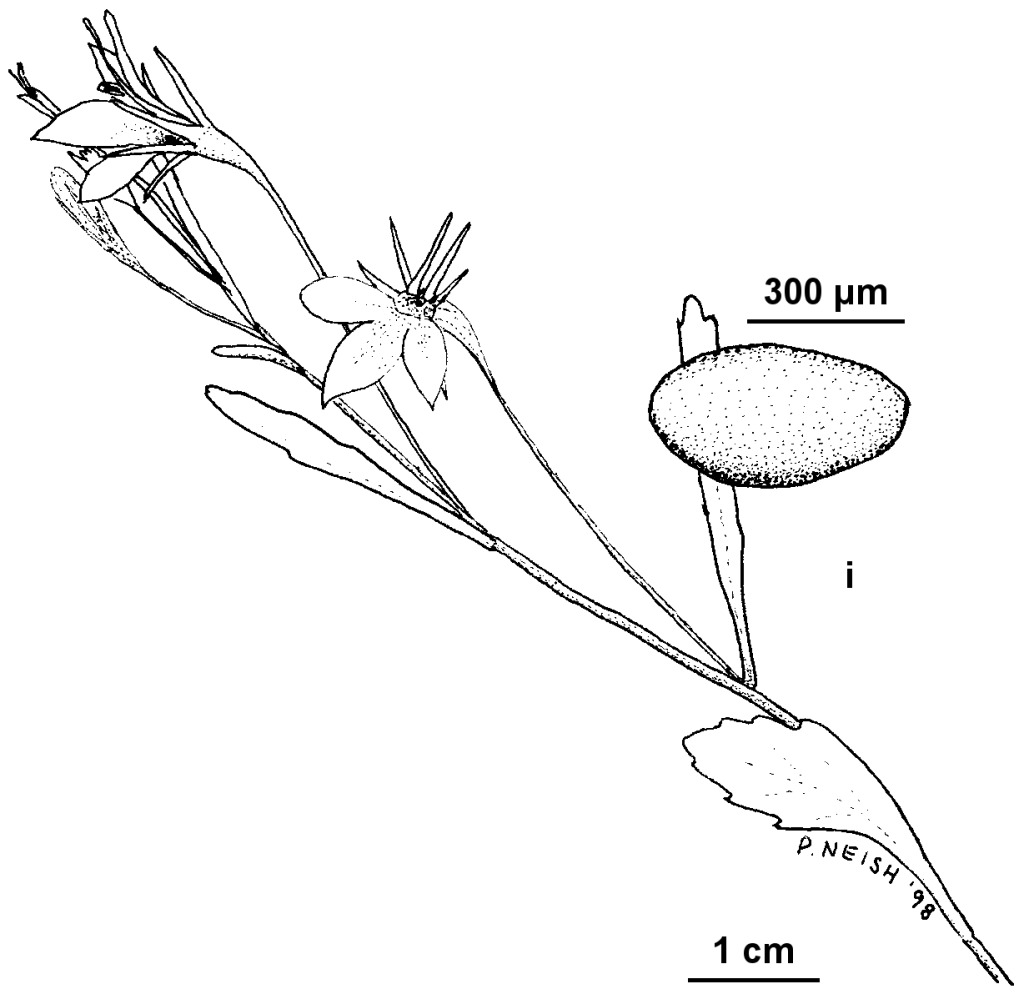Lobelia erinus
L. Bedding LobeliaErect to sprawling, glabrous or c. bristly annual; stems not rooting at nodes. Leaves spathulate, obovate or oblanceolate, c. 8–50 mm long, c. 3–21 mm wide, reduced above, toothed, thin-textured; petiole 0–15 mm long. Flowers in terminal racemes, bisexual; pedicels c. 10–40 mm long, glabrous or sparsely hairy. Calyx-lobes 2.5–7 mm long, entire; corolla 2-lipped, 7–15 mm long, blue (rarely mauve, pink or wholly white); upper 2 lobes erect or spreading, oblanceolate, c. 2–6 mm long, c. 0.8–2 mm wide, lower 3 lobes spreading, obovate, c. 2–9 mm long, 1.5–5.5 mm wide, tube c. 5–10 mm long, split to within 1–2.5 mm of base, with fine retrorse hairs internally or rarely glabrous; filaments c. 4–5.5 mm long, anther tube 1.5–2.2 mm long, with short acute hairs on outer surface, 2 lower anthers each with an apical seta 0.3–0.4 mm long and shorter penicillate hairs, upper 3 anthers glabrous or with a very inconspicuous crest at apex. Capsule obconical, c. 3–6 mm long; seeds ellipsoid, slightly compressed, c. 0.4–0.5 mm long, light brown, lustrous, smooth or very faintly ridged. Flowers Dec.–Feb.; fruits not collected in Victoria.
GleP, VVP, GipP, CVU, HSF. Also naturalised SA, NSW. Native to tropical and southern Africa. Frequently grown as a bedding annual, recorded as naturalised at Steiglitz, Warrandyte and Yarra Bend.
An exceedingly variable species, 6 varieties being recognized by Wimmer (1953). These varieties intergrade and the species is treated here in the broad sense following Thulin (1983).
Albrecht, D.E.; Walsh, N.G. (1999). Campanulaceae. In: Walsh, N.G.; Entwisle, T.J., Flora of Victoria Vol. 4, Cornaceae to Asteraceae, pp. 553–553. Inkata Press, Melbourne.
 Spinning
Spinning

